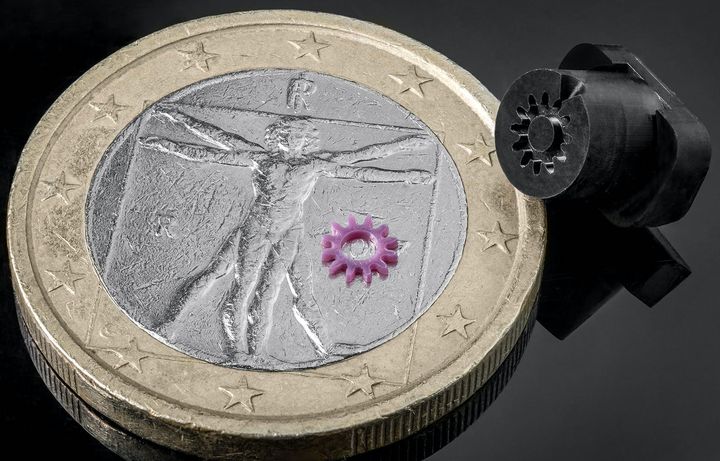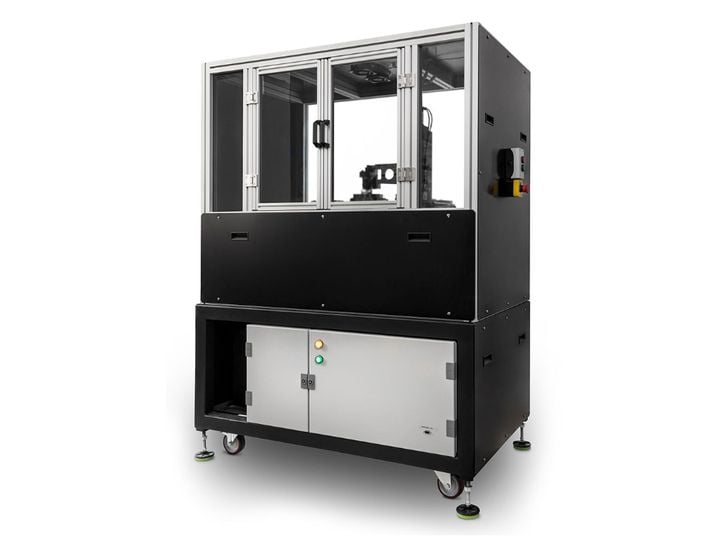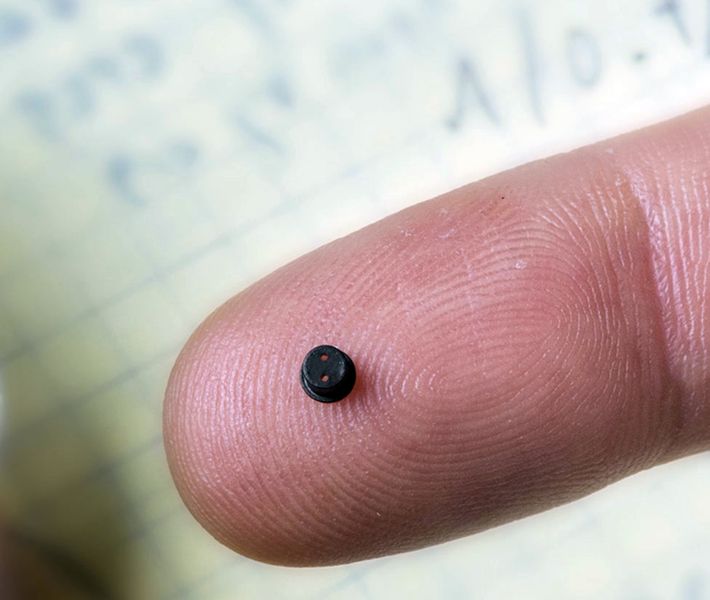
Nanofabrica has demonstrated an intriguing economy of scale when producing 3D printed injection molds.
Tera 250 3D Printer

The Israeli startup company produces the Tera 250, a 3D printer that is capable of printing amazingly tiny objects in very high resolution. This is the mysterious 3D printer we wrote about last year. They state the machine’s resolution at 0.0019mm, which is definitely among the best in the industry.
The Tera 250 can 3D print at a rate of only 1mm per hour, which by typical industry standards might be slow, but for the small parts being produced on the device it’s quite suitable. That said, the Tera 250 has a rather large build volume of 50 x 50 x 100 mm. That might seem small, but remember the objects you’re making within that volume are extraordinarily detailed.
3D Printed Injection Molds

Nanofabrica seems to be leveraging their fine resolution by pursuing the injection molding market. Injection molded parts are well known for their smooth surfaces, something that cannot easily be done on typical 3D printers that use coarse layer-based processes. But the Tera 250’s resolution is so fine it naturally produces smooth surfaces, making it ideal as a way to produce injection molds.
Injection molds are typically made in metal by CNC milling, and that is an expensive and time-consuming process. That’s the space Nanofabrica seems to be working in, as their Direct Rapid Soft Tooling approach produces functional injection molds.
The rap against 3D printed injection molds is that they typically don’t last very long, and after a few injection molding shots they deteriorate and become unusable.
However, it seems that Nanofabrica has found a way to make their molds — which, by the way, are not particularly large as they must fit within the small build volume — last far longer: They have been able to produce molds that can withstand 1000 shots.
More importantly, this mold can be produced for about US$20 on the Tera 250, which is dramatically less expensive than a conventional CNC-milled metal injection mold. The metal mold, however, would last nearly forever.
But there’s some interesting economics that occur at this price level.
3D Printed Injection Mold Economics
A Nanofabrica spokesperson suggested the following scenario: If a metal mold costs US$10,000, then one could make around 500 3D printed molds on the Tera 250. If each of those 500 were to provide 1000 injection molding shots, then for the same price as one metal injection mold, you’ve produced molds that can produce half a million shots.
I’d say that’s closing in on mass manufacturing territory.
There’s some other twists to this equation. For example, in the Tera 250 you could produce multiple molds in a single job. This means you could produce many molds in a single day, far faster than you’d ever receive a completed metal mold. In other words, you’re likely to get production going earlier with the 3D printed approach.
There’s also the possibility of producing mold variants. A metal mold can be varied, but each iteration is going to cost you, for example, another US$10,000. Thus you likely wouldn’t want variants in traditional injection molding environments.
Meanwhile, each 3D print job could in theory produce different mold variants with about the same costs as any other mold print. That leads to a scenario where “mass manufacturing” is becoming more customized.
There’s a lot to think about here, as these forays into the manufacturing equation might start upsetting business models in the near future.
Via Nanofabrica
